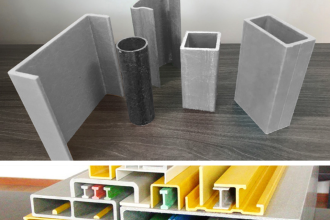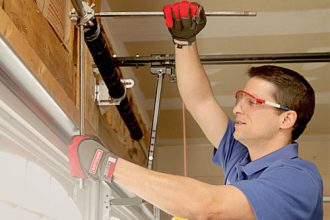When it comes to home construction or renovation, the roof is one of the most important aspects to consider. Not only does it protect your home from the elements, but it also significantly impacts the overall aesthetic and curb appeal of your property. Choosing the right roofing style that complements your home’s design is essential in creating a cohesive and attractive look.
In this article, we’ll explore various roofing styles and how they can be matched to different architectural designs. Read on.
Understanding Roofing Styles
Before diving into how to match a roofing style to your home’s design, it’s important to first understand the different types of roofing available. Here are some of the most popular options:
Gable Roof
One of the most common and easily recognizable roof styles, the gable roof features two sloped sides that converge at a ridge in the middle. The resulting triangular shape is a timeless design that complements nearly any type of home.
Hip Roof
Unlike a gable roof, a hip roof has sloping sides on all four corners that converge at a ridge. Its increased stability makes it a better choice for regions with high winds.
Mansard Roof
A Mansard roof, also known as a French roof, consists of four slopes-two steep lower slopes and two more gradual upper slopes. This design adds a distinct, refined touch to a home, making it particularly suitable for those with a classic or European architectural style.
Flat Roof
As the name suggests, this roof style is completely flat or nearly flat. It’s commonly used on modern or contemporary homes and allows for a minimalist aesthetic. Flat roofs are also ideal for creating rooftop terraces or gardens.
Gambrel Roof
Often associated with barns and traditional colonial homes, the gambrel roof features two distinct slopes on each side, with the lower slope steeper than the upper one. This design maximizes attic space, making it a great choice for homes in rural or suburban areas.
Shed Roof
This roof style has a single slope, and it’s typically used for modern or minimalist homes. It’s often paired with large windows to bring in natural light and create an open, airy feel.
Considering Your Home’s Architectural Style
Now that you’re familiar with the different types of roofs, it’s time to match one to your home’s design. The right roofing style should seamlessly blend with the architecture of your house. Here are some common home styles and the roofing styles that complement them:
Traditional Homes (Colonial, Cape Cod, or Georgian)
Traditional homes typically feature classic, symmetrical designs, and they often have gable or hip roofs. The simplicity and elegance of these roof styles enhance the timeless appeal of these homes. A gable roof is especially common for Colonial homes, while a hip roof works well for Cape Cod-style houses.
Modern and Contemporary Homes
Modern homes often prioritize clean lines, open spaces, and minimalistic designs. Flat roofs or shed roofs are ideal for this type of architecture, as they emphasize the sleek, simple aesthetic. These roofing styles allow for large windows and open floor plans, further enhancing the modern look.
Cottage or Craftsman Homes
These homes have a more rustic, cozy feel. A gable or hipped roof works well with cottages, as it complements the quaint, charming appearance. A gable roof with a steep pitch is often seen on Craftsman-style homes, and the addition of wide eaves and exposed rafters adds to the style’s character.
Victorian Homes
Victorian houses are known for their intricate, decorative details and steeply pitched roofs. Mansard roofs are a signature feature of Victorian architecture, as they provide space for additional rooms or an attic. The elegant design of the mansard roof works well with the ornate, complex look of Victorian homes.
Farmhouse and Barn-Inspired Homes
Gambrel roofs are a popular choice for farmhouse or barn-style homes. The design offers extra space in the attic, which can be used for storage or converted into living space. The steep angles of the roof add to the rustic charm of these types of homes.
Factors to Consider When Choosing a Roof
Beyond the architectural style of your home, there are several other factors to consider when selecting the right roofing style. These include:
Climate
The climate in your area plays a huge role in determining the type of roof you should choose. For example, if you live in an area with heavy snow, a steep-pitched roof like a gable or mansard will allow the snow to slide off easily. It’s helpful to consult local roofers to make the right decision.
Durability
Different roofing materials have varying lifespans and durability. Asphalt shingles, for example, are cost-effective but may need to be replaced every 20-30 years.
Metal roofs are more expensive upfront, but can last up to 50 years or more. Consider the durability of the roofing material in your chosen style to ensure long-term protection for your home.
Energy Efficiency
Some roofing styles are more energy-efficient than others. For example, a flat roof with proper insulation can help reduce heating and cooling costs, while a steep-pitched roof may allow for better ventilation and air circulation. Reflective roofing materials can help keep your home cooler in hot climates.
Budget
Budget is a crucial consideration when selecting a roofing style. While a mansard or gambrel roof may offer additional living space, these roofs tend to be more expensive to install due to their complexity. Simpler roof styles like gable or hip roofs are more affordable and can still provide a great aesthetic.
Roofing Materials to Consider
There are many roofing materials to consider, each with its own unique advantages and aesthetic appeal. For a modern and sleek design, metal roofing is a popular choice with its durability and energy efficiency.
For a more traditional look, asphalt shingles offer a wide variety of colors and textures to match any home style. For a more rustic appeal, wooden shakes or shingles can add character and charm to your roofline.
Get the Best Roof Today
Choosing the right roofing style for your home is an essential decision that impacts both the aesthetics and functionality of your property. By following this guide, you can make an informed decision that complements your home’s overall look and provides lasting protection. The right choice will elevate your home’s curb appeal and ensure that it stands the test of time.
If you want to read more articles, visit our blog.














